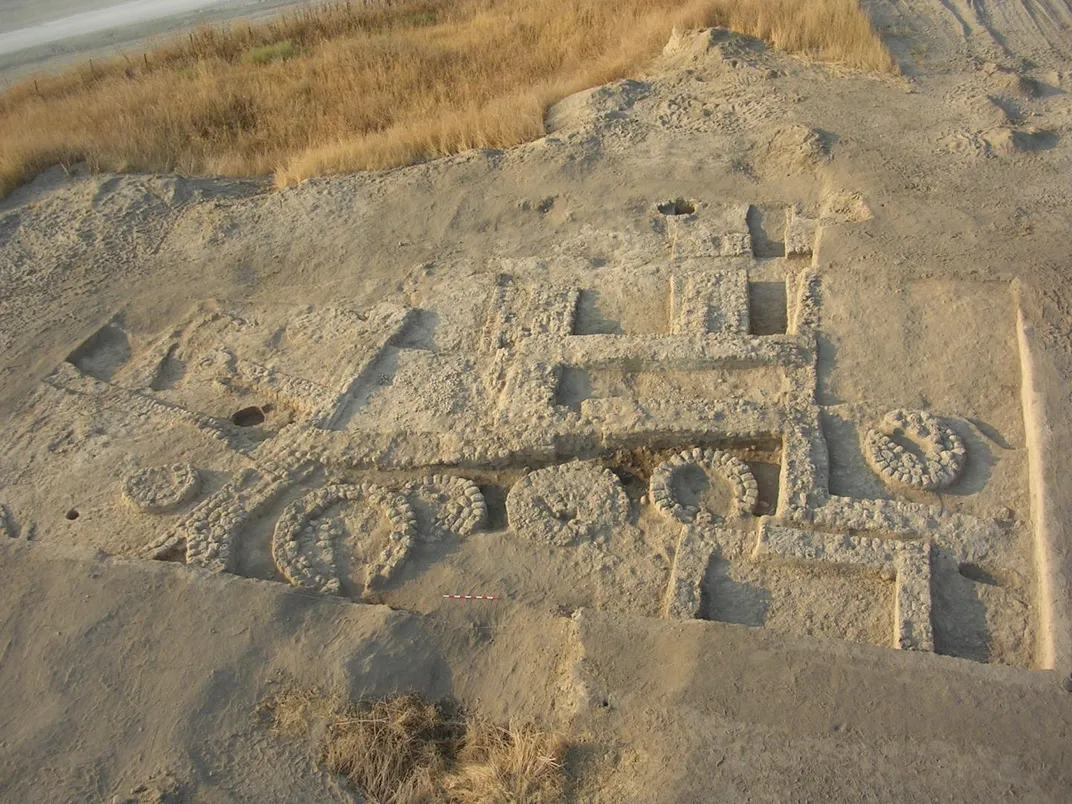7,000-Year-Old Seal Impression Found in Israel Offers Clues to Prehistoric Trade
The clay object—the oldest of its kind found in the region—may have been used to mark a shipment or secure a grain silo door shut
:focal(396x289:397x290)/https://tf-cmsv2-smithsonianmag-media.s3.amazonaws.com/filer/2d/0b/2d0b88ae-d51c-474e-856b-5bd81451ed52/i_hate_everything.jpg)
Archaeologists conducting excavations at the prehistoric Israeli village of Tel Tsaf have uncovered a 7,000-year-old piece of clay bearing the impressions of at least two seals inscribed with geometric patterns. The object is the oldest of its kind found in the southern Levant to date and may point to Tel Tsaf’s status as a bustling administrative hub.
As Amanda Borschel-Dan reports for the Times of Israel, the seal impression is one of around 150 discovered at the site between 2004 and 2007. Of these so-called sealings, or bulla, only one—the specimen newly detailed in the journal Levant—was stamped with a design; the rest served a similar purpose but were essentially just small lumps of unembellished clay.
The seal impression’s owner likely used it to mark a shipment or secure a grain silo door shut. If the sealing was later found broken, the person would know that someone had disturbed their property.
“Even today, similar types of sealing are used to prevent tampering and theft,” says study co-author Yosef Garfinkel, an archaeologist at the Hebrew University of Jerusalem, in a statement. “It turns out that this was already in use 7,000 years ago by landowners and local administrators to protect their property.”
Per the study, the sealing dates to the Middle Chalcolithic period (5200–4500 B.C.) and was originally part of a larger object. One of the surviving fragment’s sides features a long line running lengthwise, with shorter strokes intersecting diagonally, while the other sports parallel zigzag lines. According to Rossella Tercatin of the Jerusalem Post, the fact that the bulla contains multiple impressions could indicate it was stamped by two people coordinating a transaction.

The age and design of the artifact suggests that Tel Tsaf may have been one of the first trade hubs in the southern Levant. As co-author David Ben-Shlomo of Ariel University tells the Times, the material used to craft the sealing originated in an area more than 6 miles away from the settlement.
“Potters often travel several kilometers to take clay from a rich site,” he adds. “However, it could indicate that Tel Tsaf is possibly a central site to which neighboring smaller sites brought their wares.”
Though researchers in the region have previously discovered seals dating back 8,500 years, no seal impressions from that era had been found until now. The fact that the sealing came from so far away may indicate it was used to seal a portable container brought to Tel Tsaf by a passing merchant, reports Ruth Schuster for Haaretz. Other artifacts unearthed in the village, from Egyptian shells to Turkish obsidian to Mesopotamian pottery, further testify to its thriving exchange networks.
“There is no prehistoric site anywhere in the Middle East that reveals evidence of such long-distance trade in exotic items as what we found at this particular site,” says Garfinkel in the statement.
The Tel Tsaf sealing’s discovery hints at an early form of administration that predates the development of writing. Most more recent seal impressions found in the region include script, such as the bearers’ names, according to the statement.
As Jesse Holth writes for ARTnews, excavations at Tel Tsaf have previously revealed ceramics, beads, shells, animal remains, flints and a clay figure resembling a dog. In one grave, researchers found the body a woman buried alongside a metal awl, obsidian beads and a belt adorned with 1,668 ostrich eggshell beads.
/https://tf-cmsv2-smithsonianmag-media.s3.amazonaws.com/accounts/headshot/Isis_Davis-Marks_thumbnail.png)
/https://tf-cmsv2-smithsonianmag-media.s3.amazonaws.com/accounts/headshot/Isis_Davis-Marks_thumbnail.png)